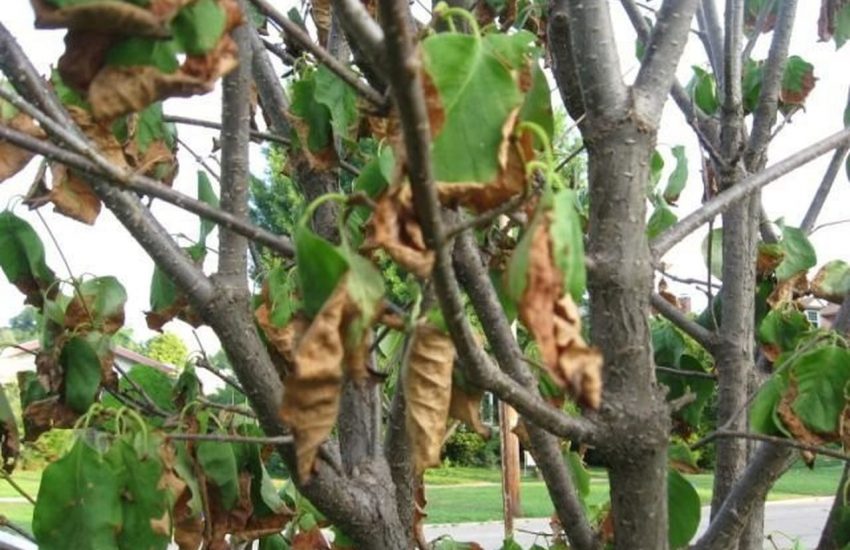How to Grow a Banana Tree from Seed
Introduction
Bananas are a delicious fruit that we all adore, but they can only be grown in specific tropical climates with enough heat and precipitation to support the growth of the stem. Wherever you are in the world, you can produce different kinds of banana plants from seeds as outdoor or indoor houseplants. Have you ever wondered why bananas lack seeds? So, how do banana trees reproduce?
You might find tiny black dots that resemble banana seeds when you cut open a banana you bought at the supermarket. These seeds are too immature to be planted or grown. Commercially produced bananas, such as the Cavendish variety, are seedless. This is because they have undergone genetic modification over time to become a triploid, or three sets of genes instead of two, to produce a seedless variety.
Because banana plants are wonderful, fruit-bearing, and quick-growing, growing them from seed is fun. Following the instructions can be relatively easy and rewarding to grow banana trees from seed. So, can banana trees be grown from seeds? Do you have to buy bunches of bananas from the grocery store, or is it possible to grow them in your garden? Learn how to grow a banana tree from seeds by reading on.
How Long for Banana to Grow From Seed
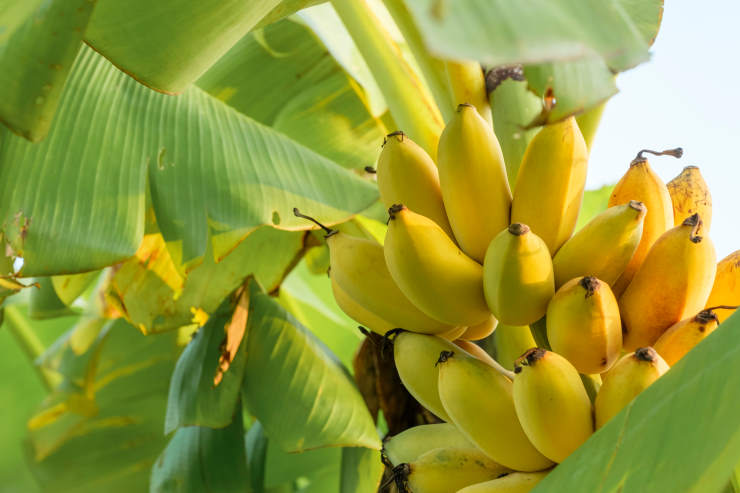
Banana trees produce a lot of fruit and grow quickly. Banana plants in use today have undergone genetic modification, as I’ll explain in more detail below. If you’re thinking about growing a banana tree but are unsure of the timeframe, I’ve got you covered! This tree, which originated in Central and South America, is now grown in a variety of nations, including those in the US, Europe, Africa, Asia, New Zealand, and Australia.
It is grown as an ornamental plant in tropical and subtropical climates. These trees can grow to 40 feet in just 9 months. About six months pass before the first crown of leaves appears. Keep the leaf crown around the flower to prevent sunburn. Their first fruit is ready in just 12 months, and they reach their full height in about 9 months.
The bananas take about two months to reach maturity. Support your tree to prevent it from breaking off as much as possible. A banana is ready to be picked when it is well-rounded, has ribs, and has dried flowers that are simple to remove. They can either be picked when they are still green or allowed to ripen. The lifespan of a banana plant can be between 6 and 25 years, but a banana stalk only lives for about 1.5 to 2 years on average.
Can I Grow a Banana Tree From a Banana?
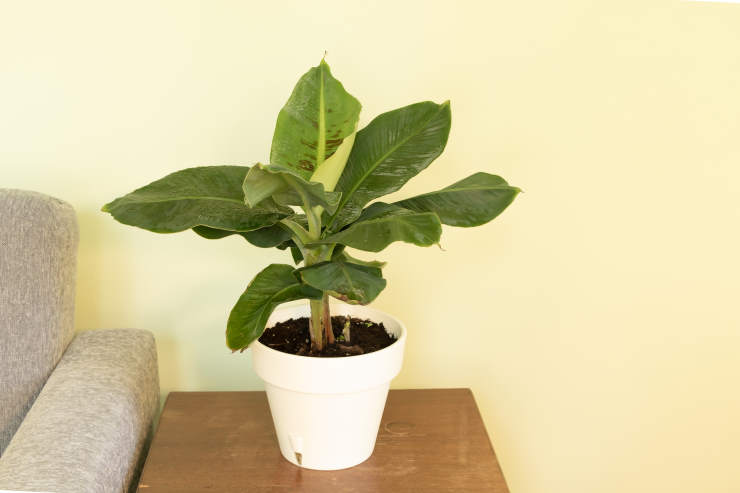
The short answer is no, since commercial bananas lack viable seeds, you can’t grow a tree from one. The mother plant’s offsets are used to grow bananas. Since bananas are herbs, they spread vegetatively through the ground, where new shoots appear. This is how bananas successfully spread more readily than through the more difficult method of seeds.
Instead, you should buy an established tree to plant in your garden. The plant will start to die once it has produced its fruit, but by then, it will have sprouted daughter plants from the same stem. These are independent plants with roots that can be separated from the main plant and planted elsewhere.
How to Germinate a Banana Seed
Learning how to grow a banana tree from seed is not an easy task. Wild banana seeds can only naturally sprout in certain environments. You must exercise patience and establish the ideal conditions. If you want to grow your banana plant, you’ll need what is referred to as the sucker or seeds. Although bananas occasionally cost a lot, the seeds are typically inexpensive and simple to find. If you’re ready, follow these five steps to grow bananas from seed at home:
- Soaking the Seeds

One of the crucial steps in growing trees from seeds is preparing the seed before planting. Choose a species that will be effective for the job at hand. The banana seeds should be put in a bowl with warm water covering them to start germination; as the water cools, replace it with warm water. Keep the seeds in warm water for 24 to 48 hours to break their dormancy.
Softening the seed coat enables the embryo to sprout more quickly and easily. Don’t worry if all you find are smaller banana seeds; banana seeds come in a range of sizes. To prevent overcrowding and the herb from ever-growing, try to avoid scattering multiple seeds throughout the same area.
- Preparing the Environment
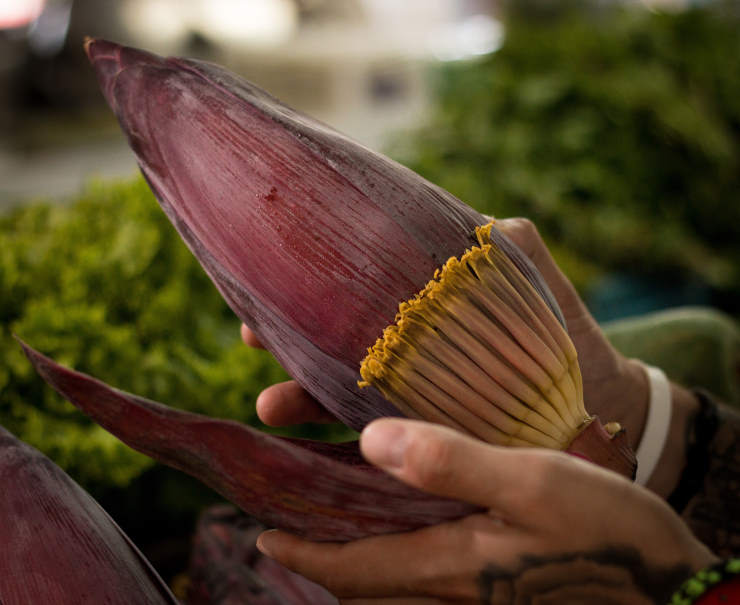
While the seeds grow in the water, create the ideal outdoor space for the tree. Either a portable flower pot that can be moved inside and out and always kept warm or a bed in a particularly sunny area. Prepare the container and fill it with potting soil greatly enriched with 40% organic compost to create the ideal environment for banana growth.
Banana seeds that are not dormant can remain in the wild for a number of years while they wait for the proper soil temperature to indicate that it is time for germination. Successful germination depends on the soil temperature fluctuating, even though the mechanism by which seeds perceive temperature is still not fully understood.
Use a heating mat or a heat lamp to increase the soil’s temperature before you plant it in your garden for a few hours each day. Let the soil cool to a minimum temperature of 60°F. The harsh winters that are typical in colder climates won’t be able to survive this herb because it is not hardy. Don’t forget to give the bananas some time to adjust to the indoor environment and keep the soil moist during the transplant.
- Planting the Seeds
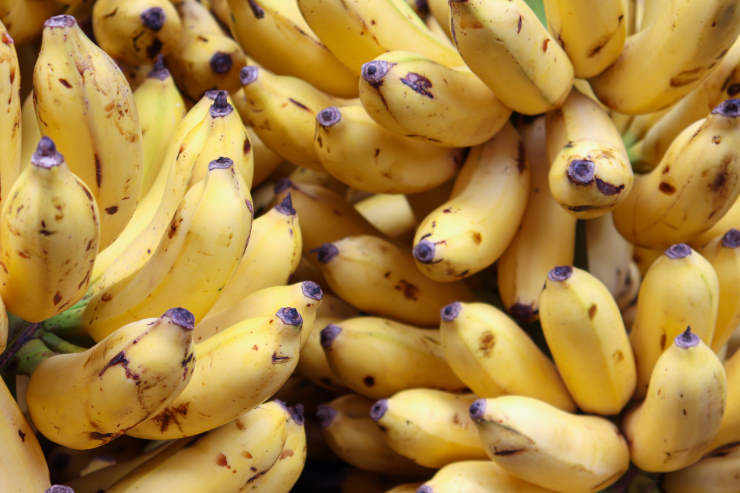
If necessary, you can plant the seed in a pot for the first week or two, but you should try to plant the seeds directly outside into permeable soil. After the seeds have been soaked, please bring them to the planting area and bury them in the ground 1/4 inch deep. Cover the soil after adding more compost.
After that, watering the area ensures the soil is damp but not soaked. To properly adjust levels, invest in high-quality fertilizer after a test to determine the pH of the soil. The ideal pH range for banana trees is between 5.5 and 6.5. Space your banana seedlings about 2 meters apart to avoid crowding and blocking a plant’s exposure to the sun.
- Maintain an Optimal Growth Environment
Following the planting of the banana seeds, keep the soil moist for at least two weeks. This promotes the plant’s growth and raises the possibility that it will keep growing well and robustly. Do some research on your seed to keep the right ratio. Depending on the type of banana, it may only need 5 hours of warm temperatures or as much as 19 hours of cool temperatures. Enough water should be added to the tray to keep the soil damp but not soggy.
Keep the area moist as the seed settles in and begins to germinate, being careful not to drown it. The seed may rot in excessively wet soil. Because bananas need a lot of potassium to form strong roots, you might want to think about making your organic compost from a combination of different household waste materials. This needs to be dispersed equally throughout the garden’s space occupied by the tree.
- Patiently Waiting
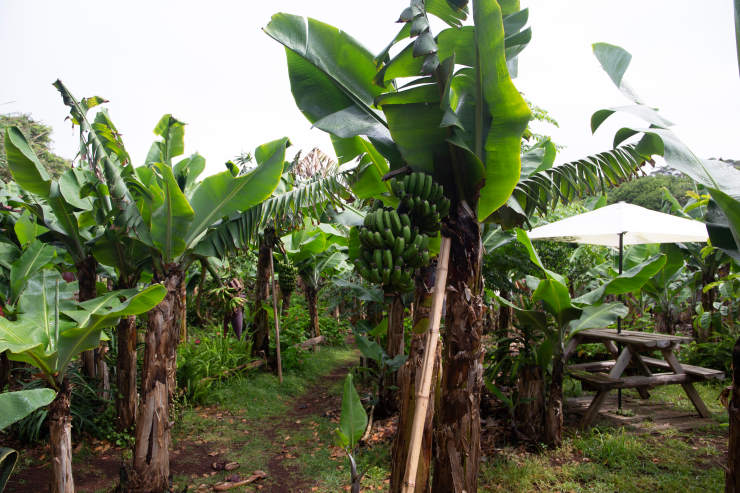
Banana seeds cannot be rushed into germination. Waiting for your banana seeds to germinate is the phase that can be the most unpredictable. Depending on the variety, seed germination can take anywhere from two to three weeks to two or more months. So, while you wait, be patient and pay close attention to the soil’s temperature and moisture level.
Where Are the Seeds in a Banana?
Before domestication, wild bananas had larger, more noticeable seeds that could aid a mother plant in producing a new banana plant by giving a seedling the resources it needs to grow. However, because the Cavendish subgroup is a hybrid plant, its tiny seeds are infertile. Similar to seedless grapes, humans have discovered and grown seedless mutations.
Since bananas have no seeds today, all banana trees are grown from cuttings. There are now tiny, infertile black specks on a domesticated banana today where the seeds once were. The remnants of seeds that were unable to develop due to the mutation are the tiny brown spots seen on bananas.
Is It Possible to Grow a Banana Tree Indoors?
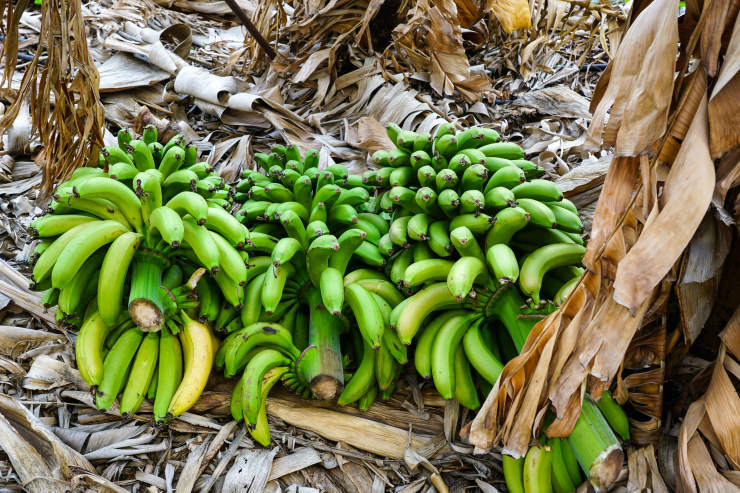
It is possible to grow a banana tree in a pot indoors. A banana tree can thrive indoors as a houseplant if given enough light and moisture. A lot of homeowners discover that this is the best way for them to grow a banana tree. Some banana varieties thrive in containers and can withstand temperature drops. They are popular with gardeners who enjoy rare tropical plants.
Banana trees typically reach heights of 15 meters. If you want to learn how to grow this tree from seed as a houseplant, look for a smaller variety designed for indoor use, such as the Dwarf Cavendish, which can grow up to 2-4 meters tall.
You should select a container with at least a 3-inch gap between its sides and the plant’s centered pseudo stem because the size of the container may restrict the banana plant’s growth. As your tree grows, move it into a larger container. Keep the following things in mind when selecting a pot for your tree:
- A matching saucer and bottom holes ought to be included with the pot.
- The container should be reused once the trees have been relocated.
- Moving larger, heavier trees is made simple using lightweight materials.
- Made of a durable material that will keep the container from easily breaking or discoloring, suitable for indoor and outdoor use.
Where to Plant the Banana Tree Outdoors
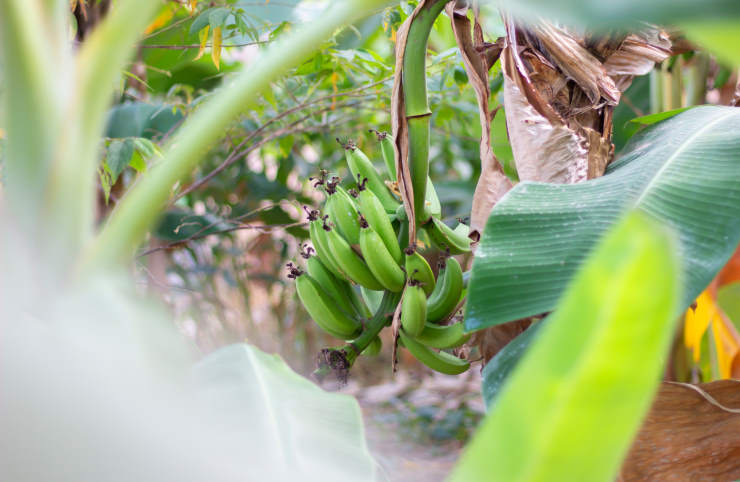
The sun should be considered when choosing a location for your tree outside. Choose a location that gets the most sun. Your tree will be happy with six to eight hours of sunlight each day. Sandy draining soil is best for banana cultivars. Most of the time, different types of soil are used for planting. Sand, fertile soil, and soil with good drainage are the ideal conditions for banana growth.
Have hope even if your yard isn’t in the best spot. Fruit trees are extremely adaptable and respond well to fertilizers, so they can thrive in nutrient-poor soil. Simply stay away from areas with horrible drainage of hefty soils. When learning how to grow a banana tree from seed, another thing to keep in mind is that even a year or two after planting, it will be very challenging to transplant your tree. As a result, take your time positioning it in the ideal spot.
Conclusion
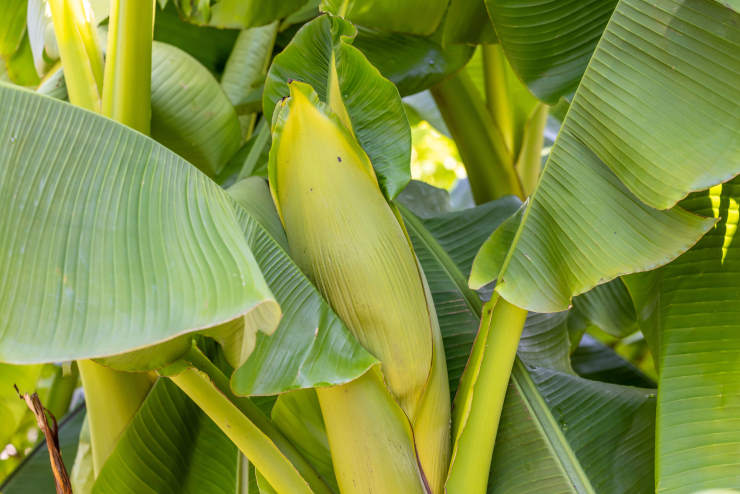
Fruits like bananas are nutrient-dense and have a number of health benefits. They are high in potassium and vitamin C, which can help with heart problems and digestion. All bananas are grown from seeds, but the most widely available variety found in supermarkets—seedless bananas—is not. A specimen banana tree is the best way to give your garden an exotic, tropical feel. Due to its quick growth, unusual lifespan, and unique fruit production process, this tree is exceptional.
Simply put, starting with an established tree and using propagation techniques will give you the best selection. I hope this article has helped you to learn how to grow a banana tree from seed. What are you waiting for if you want bananas grown in your backyard by the following year? You’ll be happy you started as soon as possible in the future. Bravo for trying; growing a banana tree takes a lot of effort. Happy gardening, everyone!
You may also be interested in:


